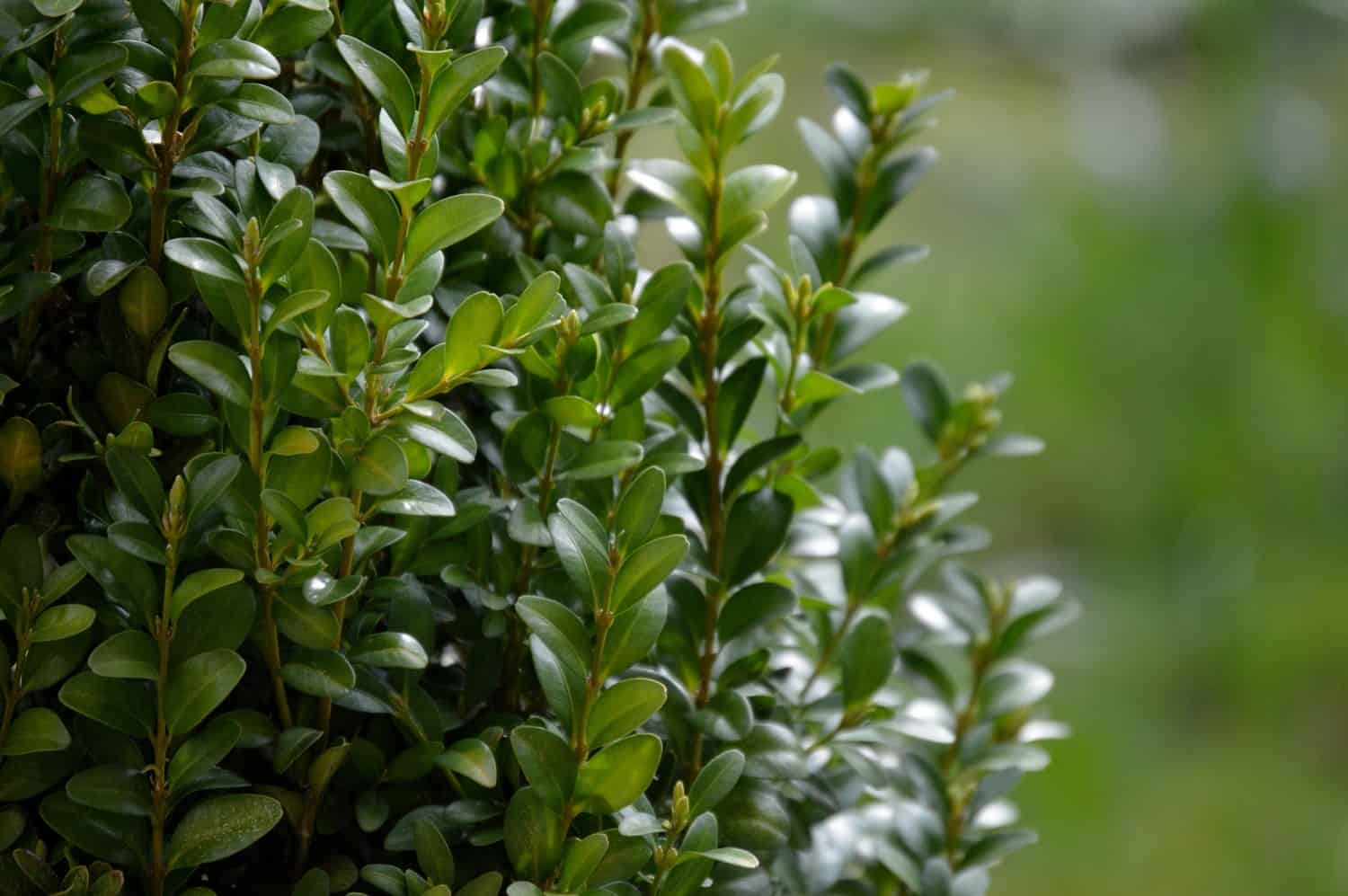
Which shrubs to replace boxwood?
our alternatives
Contents
The boxwood (Buxus sempervirens) is an evergreen bush valued for its foliage and great ease of use. Unfortunately, it is now suffering from numerous pests and diseases, the most formidable of which is the box tree moth.
The box tree moth (Cydalima perspectalis) is a small defoliating caterpillar that wreaks havoc on the bush. Originating from Asia, this caterpillar, which later transforms into a harmless moth, mercilessly munches through quantities of boxwood in gardens as well as in the wild. In this advice sheet dedicated to the box tree moth, we provide our tips for combating this pest.
Moreover, the decline disease, a fungal condition caused by fungi (Volutella buxi or Cylindrocladium buxicola), also causes significant damage in gardens.
In light of the challenges that boxwoods now pose in the garden, the solution is to substitute boxwood with other alternative bushes that, like it, are evergreen, respond well to repeated pruning, and show good resistance to pests and diseases. These bushes can be used for low hedges, topiary, and even in pots on a terrace. Discover our selection of bushes that make excellent alternatives to boxwood.
Alternatives to Boxwood North of the Loire (hardiness below -10° C)
Ilex crenata are excellent candidates to replace boxwoods. Indeed, the confusion is easy as their evergreen foliage resembles that of boxwoods. They thrive in full sun, partial shade, or shade depending on the variety. Regarding soil, they require humus-bearing, cool, and light soil. However, they are sensitive to excess lime. One detail that may be important: unlike their cousins, they are not thorny! Hardy and slow-growing, they respond well to pruning: one pruning session per year is sufficient, in early spring. Depending on the varieties, they can be shaped into low hedges, topiary, cloud trees (Niwaki), and even bonsai. Note that the variety ‘Green Hedge’ is a perfect alternative for low hedges, requiring planting 40 to 60 cm apart. They can also be grown in pots on a terrace.
Our favourite varieties:
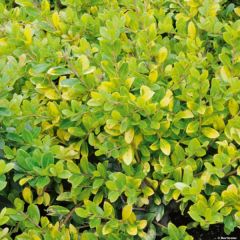
Ilex crenata Golden Gem - Japanese Holly
- Flowering time June, July
- Height at maturity 90 cm
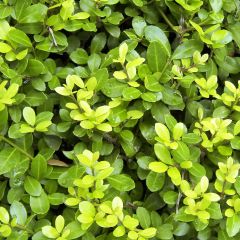
Ilex crenata Blondie - Japanese Holly
- Flowering time June, July
- Height at maturity 60 cm
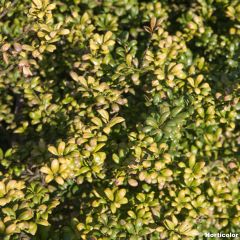
Crenate Holly - Ilex crenata Convexa
- Flowering time June to August
- Height at maturity 1,50 m
Some euonymus can brilliantly replace boxwoods. Euonymus fortunei and japonicus are particularly well-suited, and if you love variegated foliage, this alternative is for you! Euonymus fortunei, hardy down to -15°C, will thrive in all types of soil, even calcareous, as long as it is cool and well-drained. They can be planted in full sun or partial shade. Their rapid growth also makes them excellent ground covers. Euonymus japonicus, slightly less hardy (-12°C) but taller, prefers less calcareous soil and a sunny position, sheltered from cold winds. Evergreen, they respond well to repeated pruning and form dense bushes that can be shaped into topiary or low hedges. Two prunings per year are necessary to maintain a compact habit: one in spring and another in autumn. Finally, to form a low hedge, maintain a distance of 60 cm between each bush.
Our favourite varieties:
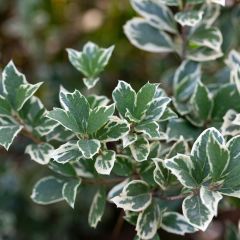
Euonymus fortunei Emerald Gaiety - Spindle
- Flowering time June, July
- Height at maturity 1 m
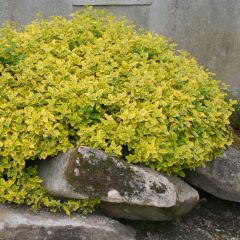
Euonymus fortunei Emerald n gold - Spindle
- Flowering time June, July
- Height at maturity 60 cm
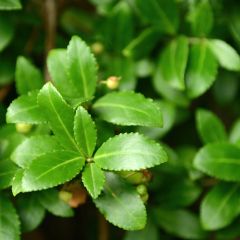
Euonymus japonicus Microphyllus - Japanese Spindle
- Flowering time June to August
- Height at maturity 1 m
Bush honeysuckles are perfect for forming beautiful, compact, evergreen low hedges in shady areas. They are very easy to grow and quite hardy in well-drained soil and all exposures. They may suffer during harsh winters, but they recover well. They spread more in width than in height. Varieties with decorative foliage are valuable for brightening up dull areas of the garden. Rapid-growing, they require regular but easy pruning: at least one in April-May and another in September-October. They can be used for low hedges or topiary and are particularly well-suited for plant sculptures. Finally, they grow well in pots on a terrace. To form a low hedge, space them 50 cm apart.
Our favourite varieties:
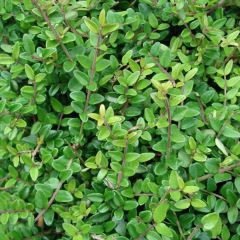
Lonicera nitida Elegant - Box Honeysuckle
- Flowering time May, June
- Height at maturity 1,50 m
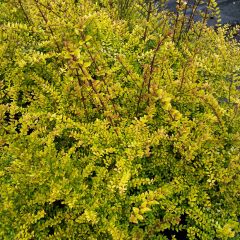
Lonicera nitida Baggesens Gold - Box Honeysuckle
- Flowering time May, June
- Height at maturity 1,50 m
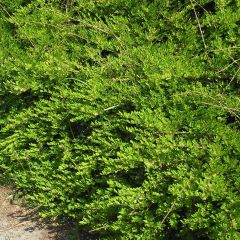
Lonicera pileata - Box Honeysuckle
- Flowering time May, June
- Height at maturity 70 cm
Slow-growing, Osmanthus burkwoodii has foliage resembling that of holly and a compact habit. It requires cool, well-drained soil in full sun or partial shade. Prune at the end of winter or after flowering to enjoy its blooms. It then adorns itself with small, highly fragrant white flowers in spring. However, refrain from pruning in the first few years, as this could hinder growth. It is very hardy and can be used for hedges or topiary. Pot cultivation is entirely possible; choose a sufficiently deep pot, with 40 cm being the minimum. To form a hedge, plant the bushes spaced 80 cm to 1 m apart.
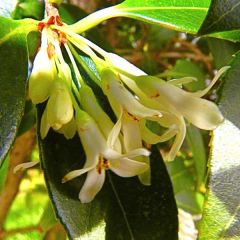
Osmanthus burkwoodii
- Flowering time May, June
- Height at maturity 3 m
Alternatives to Boxwood South of the Loire (hardiness down to -10° C)
-
African boxwood (Myrsine africana)
Myrsine africana is also a good candidate to replace boxwood in Mediterranean regions. Indeed, it is better suited for hot and dry climates. It can withstand long periods of drought, but only short periods of frost (-10/-12°C). It grows well in both sun and shade, and the presence of limestone does not bother it at all. Evergreen, it features small, glossy, ovate green leaves. Its young leaves are lighter in spring. Be aware that it may take some time to establish. Growing slightly faster than boxwood, it also tolerates pruning very well and can therefore be used in a hedge, for topiary, or even grown in pots. Maintain a planting distance of 40 cm between each bush and prune two to three times a year: in March, June, and September to form a low hedge.
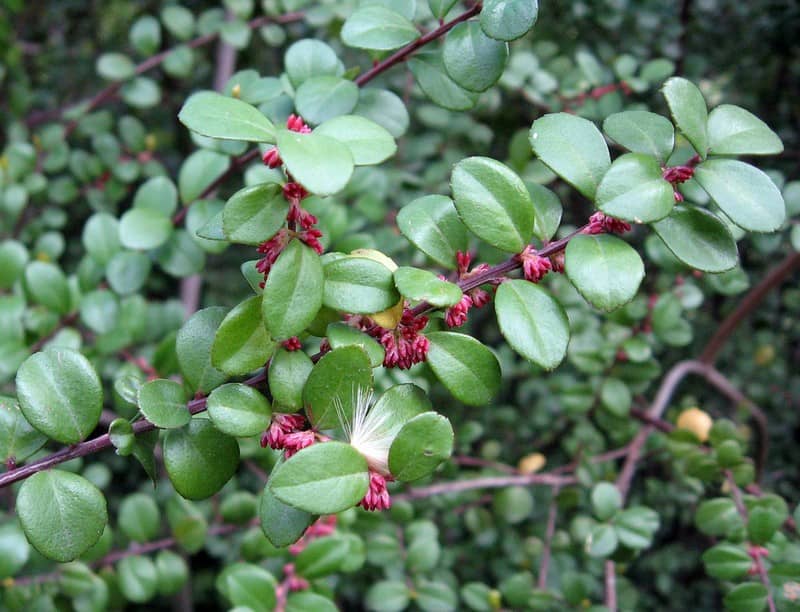 African boxwood or Myrsine africana is a great replacement for boxwood in Mediterranean regions.
African boxwood or Myrsine africana is a great replacement for boxwood in Mediterranean regions.
-
Yunnan privet (Ligustrum jonandrum)
Ligustrum delavayanum var. ionandrum is a bush with small, glossy green leaves that tolerates numerous prunings to be shaped into topiary. It will adapt to all your desires. It is quite accommodating regarding soil type but prefers fresh, well-drained soil and a sunny or partially shaded position, sheltered from cold winds. It has a slow growth rate and moderate hardiness (-10°C). It is often found grafted on a stem and shaped into a ball. Prune in April and September to maintain a neat shape.
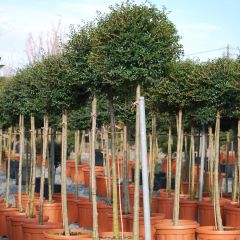
Ligustrum jonandrum - Yunnan Privet
- Flowering time June to August
- Height at maturity 1,80 m
-
Common myrtles (Myrtus communis)
Very easy to grow, myrtles are best reserved for mild climates, where winter temperatures do not drop below -10°C. They have tough, green foliage. Pruning does not compromise flowering, and they are covered with myriads of fragrant white flowers in the height of summer, followed by small fruits. Not demanding, they grow slowly in well-drained, even dry, acidic to slightly calcareous soil and in all exposures. They find their place in free or trimmed hedges or even in topiary. Prune in March to shape them as you wish. Maintain 60 cm between each bush to form a hedge. Myrtles can also be grown in pots.
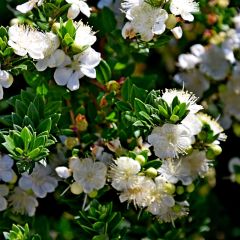
Myrtus communis subsp. tarentina
- Flowering time August to October
- Height at maturity 1,70 m
-
Bush veronicas (Hebe pinguifolia)
The Hebe pinguifolia and particularly the variety ‘Pagei’ is a compact and spreading form with small, thick grey-blue leaves, revealing a multitude of white flowers in July and August. With moderate hardiness (-10°C), its cultivation is possible north of the Loire in a very sheltered position. This variety appreciates fresh, well-drained soil in full sun. In open ground or in a large pot on a terrace, it quickly forms a beautiful round bush. This bush veronica is reserved for topiary; for this, prune in March to give it a nice shape.
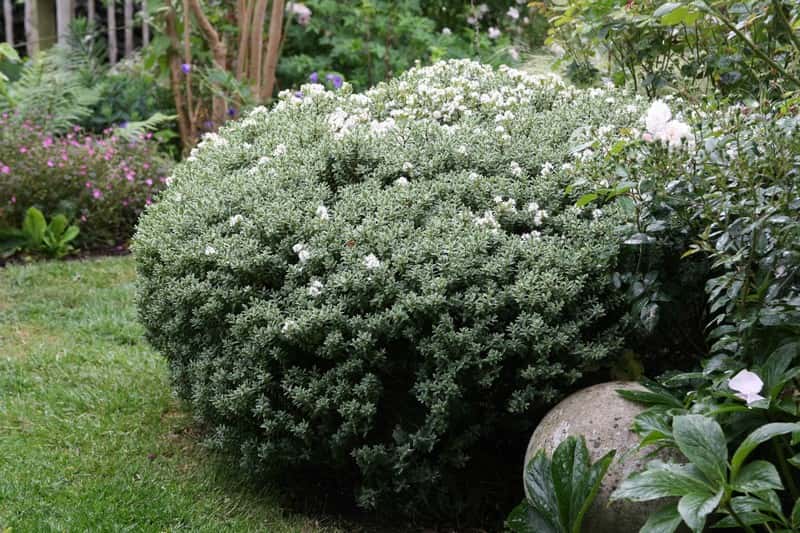 Beautiful ball of Hebe pinguifolia ‘Pagei’.
Beautiful ball of Hebe pinguifolia ‘Pagei’.
-
Osmanthus delavayi
This osmanthus is a bush with evergreen foliage that, when left free, is covered with a spring flowering of white jasmine-scented flowers before giving way to small blue-black berries. With moderate hardiness (-10°C), its cultivation is reserved for temperate regions. It grows in fresh, fertile, well-drained soil, even calcareous, in sunny or partially shaded positions, sheltered from winds and severe frosts. With a rapid growth rate, this bush is well-suited for forming low hedges. For this, maintain a planting distance of 80 cm to 1 m between each bush. It can be shaped into topiary. Prune in late winter or just after the spring flowering to enjoy its delightful fragrance. However, refrain from pruning in the first few years, as this could hinder growth.
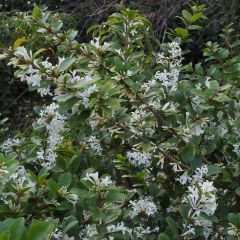
Osmanthus delavayi
- Flowering time May, June
- Height at maturity 3,50 m
Discover other Buxus - Boxwood
View all →Available in 1 sizes
Available in 4 sizes
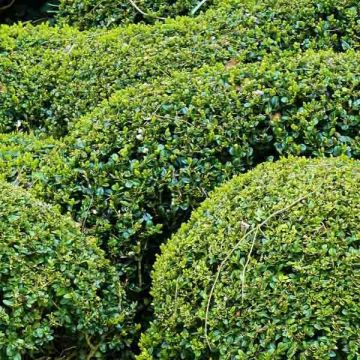
Available in 4 sizes
Available in 1 sizes
Available in 1 sizes
Available in 1 sizes
Available in 1 sizes
Available in 2 sizes
Summary table
| Plants | Hardiness ( -10°C) |
Exposure | Soil | Foliage | Growth |
| Ilex crenata | yes | Sun – Partial shade – Shade | humus-bearing, cool, light, low lime | green | slow |
| Euonymus fortunei | yes | Sun – Partial shade | all soils including lime, cool and well-drained | variegated | fast |
| Euonymus japonicus | yes | Sun | low lime | variegated | medium |
| Lonicera nitida | yes | Sun – Partial shade – Shade | cool, drained soil, including lime | green, yellow | fast |
| Lonicera pileata | yes | Sun – Partial shade – Shade | low requirements, drained soil | green | fast |
| Osmanthus burkwoodii | yes | Sun – Partial shade | cool, well-drained | green | slow |
| Myrsine africana | no | Sun – Partial shade | all soils, including lime, deep, well-drained | aromatic green | slow |
| Ligustrum jonandrum | no | Sun – Partial shade | cool, well-drained | green | slow |
| Myrtus communis ‘Tarantina’ | no | Sun – Partial shade – Shade | well-drained, even dry, acidic to slightly lime | green | slow |
| Hebe pinguifolia ‘Pagei’ | no | Sun | cool, well-drained | grey-blue | medium |
| Osmanthus delavayi | no | Sun – Partial shade | cool, fertile, well-drained, including lime | green | fast |
To go further
- Watch Olivier’s video on alternatives to boxwood
- Subscribe!
- Contents































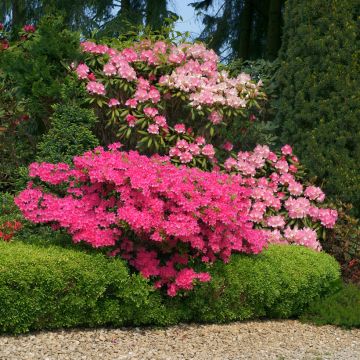

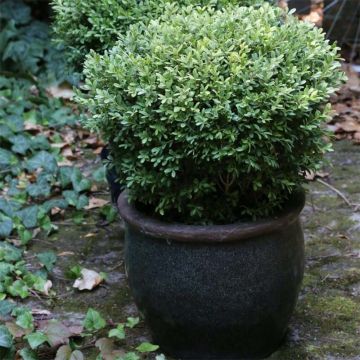



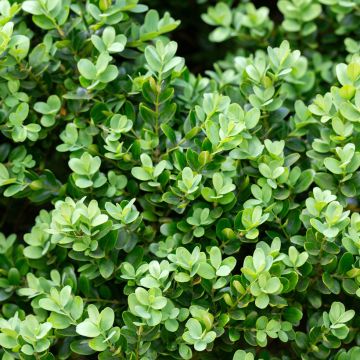
Comments